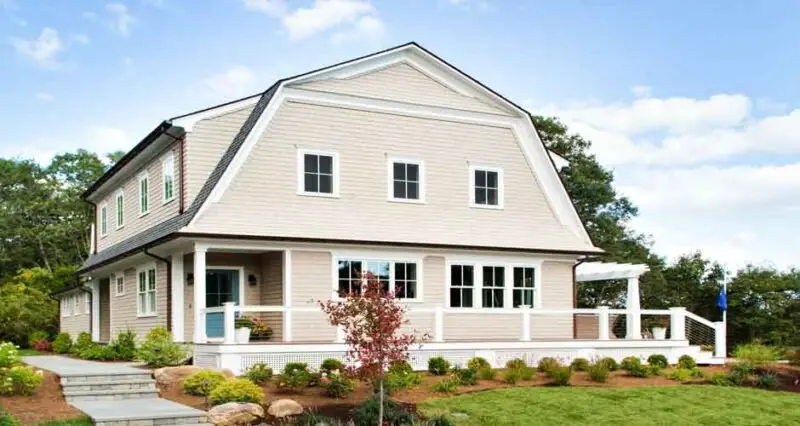
In an era where time is a precious commodity and the demands of modern life seem ever-increasing, the concept of a low-maintenance home holds undeniable appeal. Imagine a living space where chores are minimized, upkeep is streamlined, and your environment effortlessly supports your lifestyle.
Building such a home requires careful planning, strategic design choices, and a commitment to efficiency. In this guide, we’ll explore strategies for creating your low-maintenance oasis.
Embrace Minimalism in Design
One of the foundational principles of a low-maintenance home is simplicity. Embrace minimalist design aesthetics characterized by clean lines, open spaces, and clutter-free environments. Opt for durable, easy-to-clean materials that require minimal upkeep. Think hardwood floors instead of carpeting, quartz countertops instead of marble, and sleek, seamless finishes that resist stains and wear.
Invest in Quality, Long-lasting Materials
When aiming to construct a low-maintenance home, prioritizing quality is essential. Opt for top-notch materials designed for longevity, thereby minimizing the frequency of repairs and replacements. Select energy-efficient appliances and fixtures not only for cost savings on utility bills but also for their reduced maintenance requirements over time.
Additionally, contemplate incorporating features such as low-maintenance siding, roofing, and windows that are engineered to endure various weather conditions with minimal upkeep. For instance, in Michigan, consider consulting reputable metal roofing contractors to explore durable and low-maintenance roofing options suitable for the region’s climate.
Prioritize Functionality and Efficiency
Efficiency isn’t just about saving time and effort; it’s also about optimizing functionality. Design your home with practicality in mind, focusing on layouts that maximize space utilization and minimize wasted square footage. Consider features like built-in storage solutions, multifunctional furniture, and smart home technology that enhances convenience and streamlines daily tasks.
Plan for Easy Cleaning and Maintenance
One of the key benefits of a low-maintenance home is the ease of cleaning and upkeep. Plan your home layout to minimize hard-to-reach areas and simplify cleaning routines. Choose materials and finishes that are easy to wipe down and resistant to stains, mold, and mildew. Incorporate features like central vacuum systems, self-cleaning appliances, and low-maintenance landscaping to further reduce the time and effort required for upkeep.
Design with Sustainability in Mind
Building a low-maintenance home goes hand in hand with sustainability. Choose eco-friendly materials and construction practices that minimize environmental impact and promote long-term sustainability. Incorporate features like energy-efficient insulation, solar panels, and rainwater harvesting systems to reduce energy consumption and utility costs while also minimizing your carbon footprint.
Future-proof Your Home with Smart Technology
Incorporating smart technology into your home design can enhance efficiency, convenience, and security while also reducing maintenance requirements. Invest in smart thermostats, lighting controls, and home automation systems that allow you to manage your home’s environment remotely and optimize energy usage. Consider smart sensors and monitoring devices that detect potential issues early, allowing you to address maintenance needs proactively before they escalate into costly repairs.
Plan for Low Maintenance Landscaping
Your home’s exterior plays a significant role in its overall maintenance requirements. Design your landscaping with low maintenance in mind, opting for native plants that are well-suited to your climate and require minimal watering and upkeep. Incorporate hardscaping features like gravel pathways, mulched beds, and drought-tolerant landscaping to minimize the need for mowing, weeding, and watering.
Invest in Professional Expertise
Building a low-maintenance home requires careful planning, attention to detail, and expertise in construction and design. Work with experienced architects, builders, and designers who specialize in energy-efficient, low-maintenance homes. They can help you navigate the complexities of the building process, make informed decisions about materials and features, and ensure that your vision for a low-maintenance home becomes a reality.
Conclusion
Creating a low-maintenance home is about more than just reducing the time and effort required for upkeep; it’s about designing a living space that supports your lifestyle, enhances your well-being, and minimizes your environmental impact.
By embracing minimalist design principles, investing in quality materials, prioritizing functionality and efficiency, and incorporating smart technology and sustainable practices, you can build a home that is both effortlessly efficient and endlessly inviting. With careful planning and strategic choices, you can enjoy the benefits of low-maintenance living for years to come.

